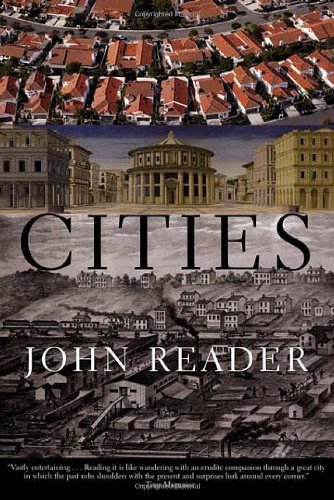معلومات عنا
دعم العملاء
احصل على التطبيق

قم بتوجيه الكاميرا لتنزيل التطبيق
حقوق الطبع والنشر © 2024 Desertcart Holdings Limited



Cities
P**G
An Insightful Read
Cities, by John Reader is more a work of anthropology and sociology through the lens of civilization than it is a detailed chronology of the development of cities and the indexing of their various constituent parts and behaviors. Although it certainly functions as the latter in many instances.Whereas many books about the built environment focus on particular urban elements (e.g. city history, or suburban sprawl, or architecture, or aesthetics, or walkability, etc.) John’s book is an account of the essence of cities. Their relation to human civilization, the natural world, the ecology of earth, the growing of food, and as shelter. It’s about the forces that shaped them in the past and the forces that are influencing them today.While not a perfect book, I’m rating this work so highly for the value of its many insights. It is here that the breadth of the author’s knowledge, wisdom, and life experience, shine through. He consistently extracts and connects various elements of sociology and history to shed light on perspectives that both illuminate and simplify the behaviors of our complex man-made society and systems. He connects far-flung dots. It is for this reason that I could not put this book down, anxiously awaiting each page turn to see what new insight I would be greeted with to enhance my perspective of this human life on earth (which, in most cases, is in cities).
M**1
Four Stars
Thanks.
A**R
Great book
Professor insisted we needed it it but we didn’t. Great book otherwise
J**H
An Overlooked Masterpiece
After a dozen years, the humbly titled , Cities, remains an important contribution to urban studies and urban history. In fact,if a curious friend, scholarly or otherwise, were looking for a volume surveying the topic from the rise of urban civilization in Mesopotamia, China and India down to the fearfully massive 21st century mega-cities, then Reader's readable survey would be a fine place to begin. Although often overlooked by both the scholar and the common reader, Cities can fairly hold its own when compared to Mumford's The City in History or Peter Hall's Cities in Civilization. What distinguishes this volume from those earlier works, is the author's focus on the relationship of the city to the environment. As growing cities must feed themselves, provide for safe and ample water supplies and rid themselves of wastes, they may become rapacious and murderous on the one hand, or civilizing forces on the other. This is quite a story and what makes it compelling is Reader's ability to develop a coherent historical chronicle based on individual cities. You can read this book cover to cover or simply pick it up as a series of linked stories. Don't miss Reader on the logistics of feeding ancient Rome's million "welfare" residents, how 19th century London and Paris, in the nick of time, engineered their way out of monumental sewage crises, or how the Castro regime turned metropolitan Havana into a massive garden plot when Soviet aid evaporated. One may not agree with all the author's forceful judgements, but it is a pleasure to confront them.
P**R
Disappointing!
This book is actually a patchwork of vignettes dealing with urban topics. There is no continuity and no actual discussion of the topics introduced as chapter headings. These simply provide a starting point for presenting two or three specific stories. Though some are of interest, the lack of overall framework makes the book rather pointless.The layout is hopelessly antiquated with all (black and white) illustrations concentrated in four series of unnumbered pages placed at regular intervals in the main text.There can be no reason to recommend this collage to anyone.
P**R
Disappointing!
This book is actually a patchwork of vignettes dealing with urban topics. There is no continuity and no actual discussion of the topics introduced as chapter headings. These simply provide a starting point for presenting two or three specific stories. Though some are of interest, the lack of overall framework makes the book rather pointless.The layout is hopelessly antiquated with all (black and white) illustrations concentrated in four series of unnumbered pages placed at regular intervals in the main text.There can be no reason to recommend this collage to anyone.
A**Y
Good read, informative.
Does a good job covering many of the major developments in the history of cities. Not overly technical, and the insight the author offers in many of the case studies is interesting.
ترست بايلوت
منذ أسبوع
منذ 4 أيام